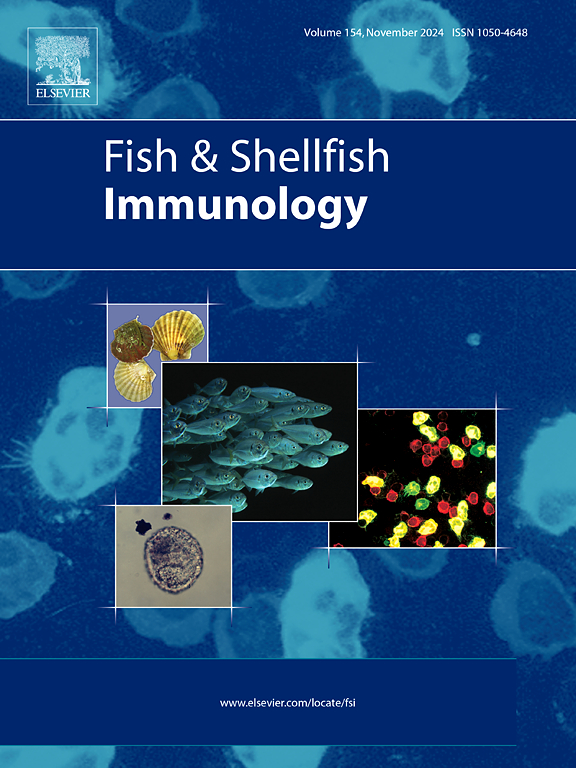In vivo imaging to trace the dissemination of Aeromonas hydrophila in common carp (Cyprinus carpio) after intestinal infection
IF 4.1
2区 农林科学
Q1 FISHERIES
引用次数: 0
Abstract
Aeromonas hydrophila (A. hydrophila) is a pathogenic bacterium that often causes serious economic losses to aquaculture and fisheries. Its infection and pathogenesis of fish are currently not fully understood. In this study, A. hydrophila was labeled with Fluorescein Isothiocyanate (FITC) and administered to common carp via gavage to trace its dissemination in common carp (Cyprinus carpio) after intestinal infection by in vivo imaging system. The optimal FITC concentration for labeling was determined to be 30 μg/mL, with a labeling time of 3 h at a bacterial concentration of 108 CFU/mL, with no significant impact on bacterial viability. The fluorescence imaging results of IVIS showed that FITC-Ah entered the internal organs through the carp intestine, first entering the kidneys and hepatopancreas (0.5 h after oral inoculation), and then the brain (around 10 h). Bacterial clearance occurred first in the hepatopancreas, followed by the brain, with the slowest clearance in the kidneys. Plate culture, 16S rRNA sequencing, and comparison of clinical symptoms confirmed the reliability of the tracing results. At the molecular level, interleukin-6 (il-6) and interleukin-8 (il-8) showed an upregulation trend, while the expression of interleukin-10 (il-10) initially decreased and then increased in the kidneys, hepatopancreas, and spleen of common carp after oral infection. The results revealed that A. hydrophila can not only infect fish through the intestine, but also mainly invade the hepatopancreas, kidneys, and brain after entering the fish's body via the intestine. Furthermore, the clearance kinetics of A. hydrophila in the internal organs of fish show that it is first cleared from the hepatopancreas, followed by the brain, with the slowest clearance occurring in the kidneys.
求助全文
约1分钟内获得全文
求助全文
来源期刊

Fish & shellfish immunology
农林科学-海洋与淡水生物学
CiteScore
7.50
自引率
19.10%
发文量
750
审稿时长
68 days
期刊介绍:
Fish and Shellfish Immunology rapidly publishes high-quality, peer-refereed contributions in the expanding fields of fish and shellfish immunology. It presents studies on the basic mechanisms of both the specific and non-specific defense systems, the cells, tissues, and humoral factors involved, their dependence on environmental and intrinsic factors, response to pathogens, response to vaccination, and applied studies on the development of specific vaccines for use in the aquaculture industry.
 求助内容:
求助内容: 应助结果提醒方式:
应助结果提醒方式:


